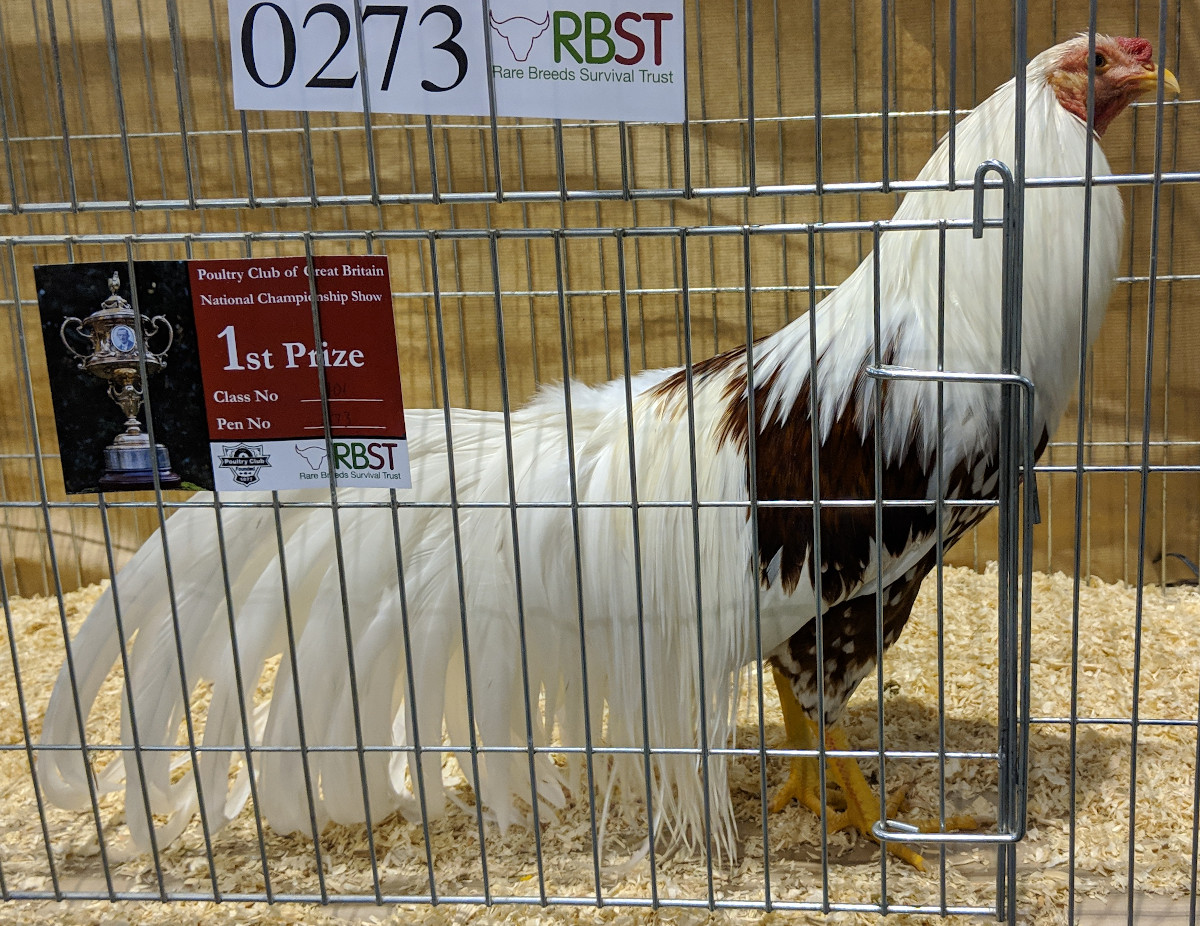
Cage training for show birds.
Cage and handling training is an important part of poultry show preparation. A docile, amicable and calm chicken will always score better than a stressed bad tempered one.
Table of Contents
My first attempts resulted in me having to coax a cockerel out of the rafters for most of an afternoon so do not be afraid of failure.
A carefully groomed bird shows to the greatest advantage and will get all that is coming to them when the judge passes, while the bird that has not been petted and handled will not show their good qualities and strong points in shape and will end up losing points.
Why do you need to cage train chickens and show birds?
Chickens must not be afraid of their keeper or anyone who handles them. Once a bird is afraid of you or abuse it, it will never fully have confidence in you again. Show birds must bold and not afraid to be handled, so they will stand upright when posed to do so, to show their carriage well. This is the "typical carriage" which has much value.
Chickens and other display fowl need to be used to:
- Being in a cage on display
- Travelling in a box
- Having dozens of other hens and cockerels around them
- Be used to crowds of people walking past
- Being handled by judges
Birds that have not been properly trained will panic and flap about and will break feathers and damage themselves. Your birds should be handled, groomed and petted each day and this whole process is likely to require much patience from the keeper.
You cage setup should be set perfectly solid on the floor so that there is no shaky movement when the bird moves around. The floor of the cage should have enough room and covering for the birds to indulge in natural behaviours like scratching, this will help prevent stress in the birds.
Below: Transport crate training is important for show chickens as they may have to spend several hours travelling.
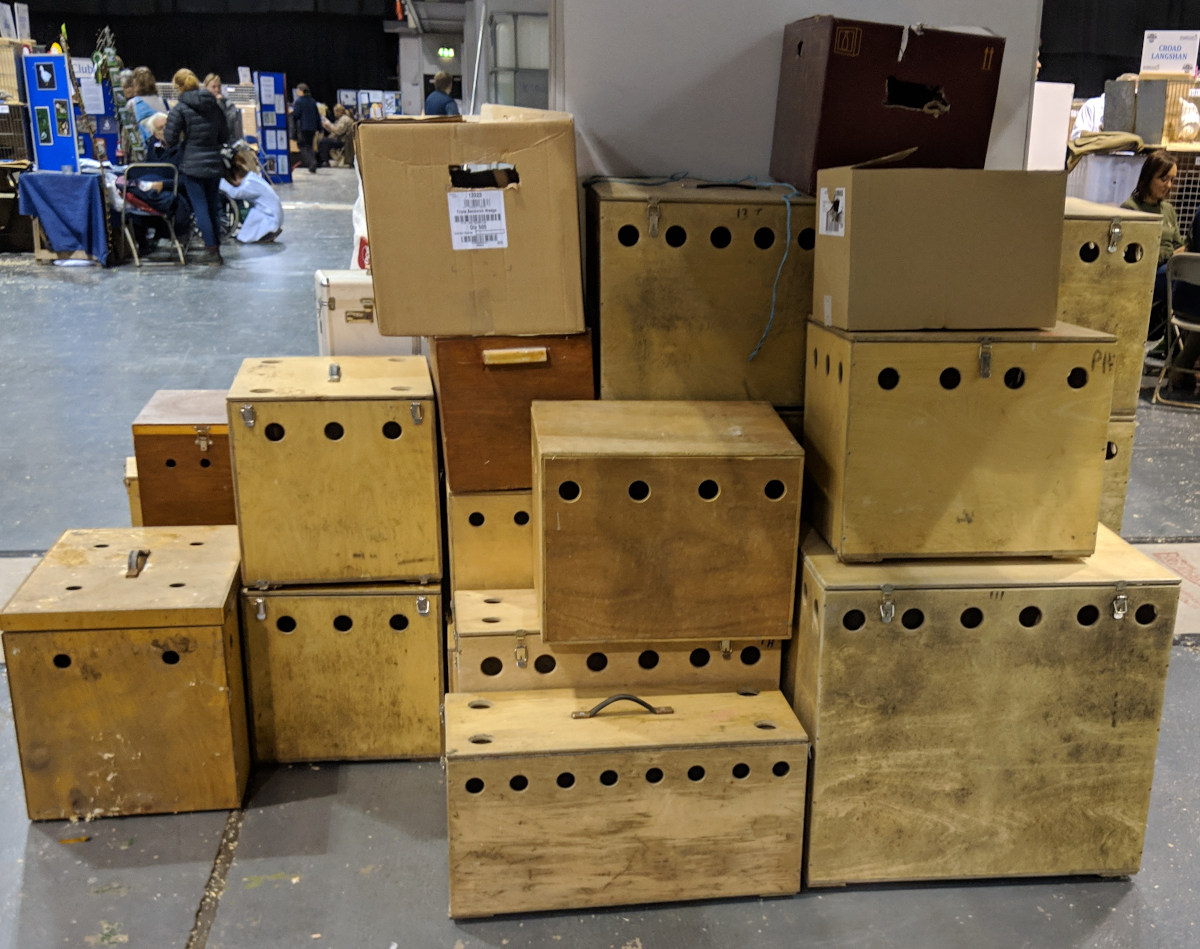
Ensure the cages are models of comfort and cleanliness, with no possible chance for a bird to injure or dirty itself. Makes sure there are no sharp edges or anywhere your chicken could get body parts trapped.
These training coops or cages are arranged so that no direct sunlight strikes them but they should be bright and airy. Stale air or draughts will compound any problems you already have.
Feeding in cages:
Chickens and all show fowl need to be fed and watered in show cages. In the UK and EU it is now illegal to keep animals confined for any length of time without access to feed and water, and this includes transporting them.
During cage training your chickens need to be fed ad lib on the food they are used to receiving. You don't want to overdo any changes. Keep feed and water up high in the cage so it is not spilled creating a mess. A carrot or lump of swede (rutabaga) can be tied to the cage bars for entertainment.
Below: In their book "From shell to show room" R.E. Jones and Theo Hewes show us their cage training setup.
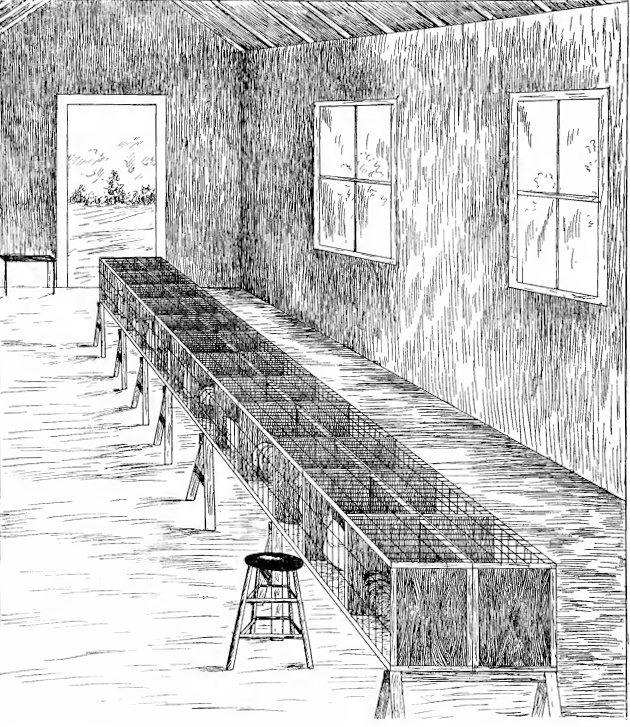
They used a four legged stool as the display arena for their chickens but a small table will work as well.
Teach them to pose for you:
Chickens need to be trained by a reward method by giving feed and treats to reinforce the behaviour you want. You will likely fail a dozen or more times but calm, patient perseverance will bring results.
When you begin training the chicken must come to you of its own free will and must be happy a relaxed around you. Also, you will have more success with 10 X 5 minute sessions than you will with two half hour sessions.
When you place your hand in the cage, put it under the chicken rather than over, and when petting chickens always keep your hand below the eyes. Hands above the head may initiate a predator response and cause fear. Initially chickens do not like to be rubbed on the back or tail,but after they are perfectly use to being handled by you they will allow it without fuss.
Below: Birds need to be used to being handled and calm in noisy environments.
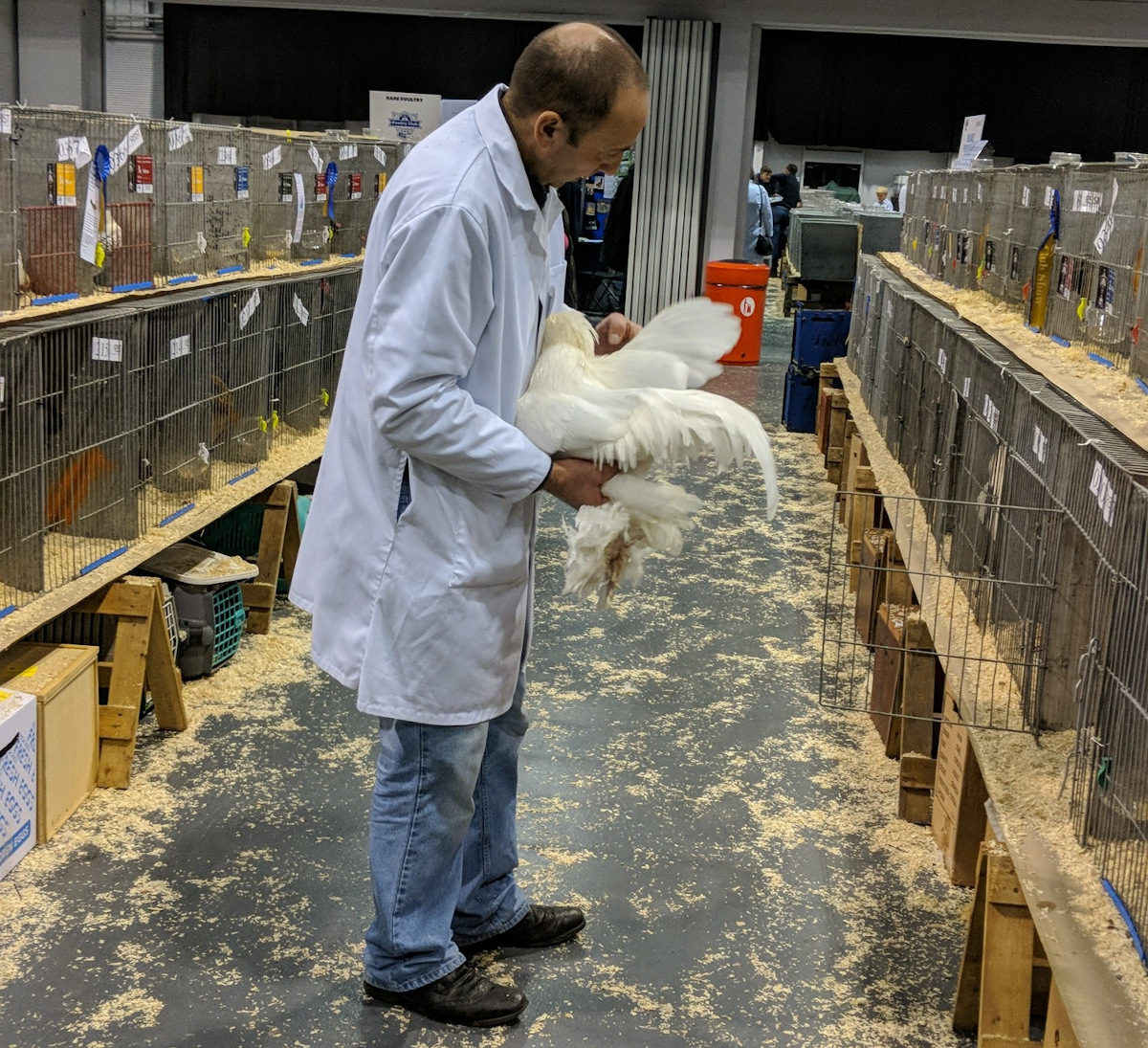
After the birds have become used to their new quarters you can begin the training. Twice a day place a table in front of cage, open the door and coax the bird out by talking to it and offering feed in your hand. I always treat my birds with as much kindness as possible, and find that it is much appreciated by them, and that I am fully repaid for my trouble in the show room.
The first time you pet a chicken, place a forefinger gently under the throat and begin to rub. Food and treats are an easy way to a chickens heart. After the bird gets used to this you can begin to rub and pet other parts of the bird beginning with its underbelly. If bird seems uneasy, gently repeat the feeding of treats and rubbing of the throat again and again until you have your bird sufficiently tame to allow of more thorough handling.
Below: A judge will use a small stick to get the bird to move in the cage and your chickens need to be prepared for this.
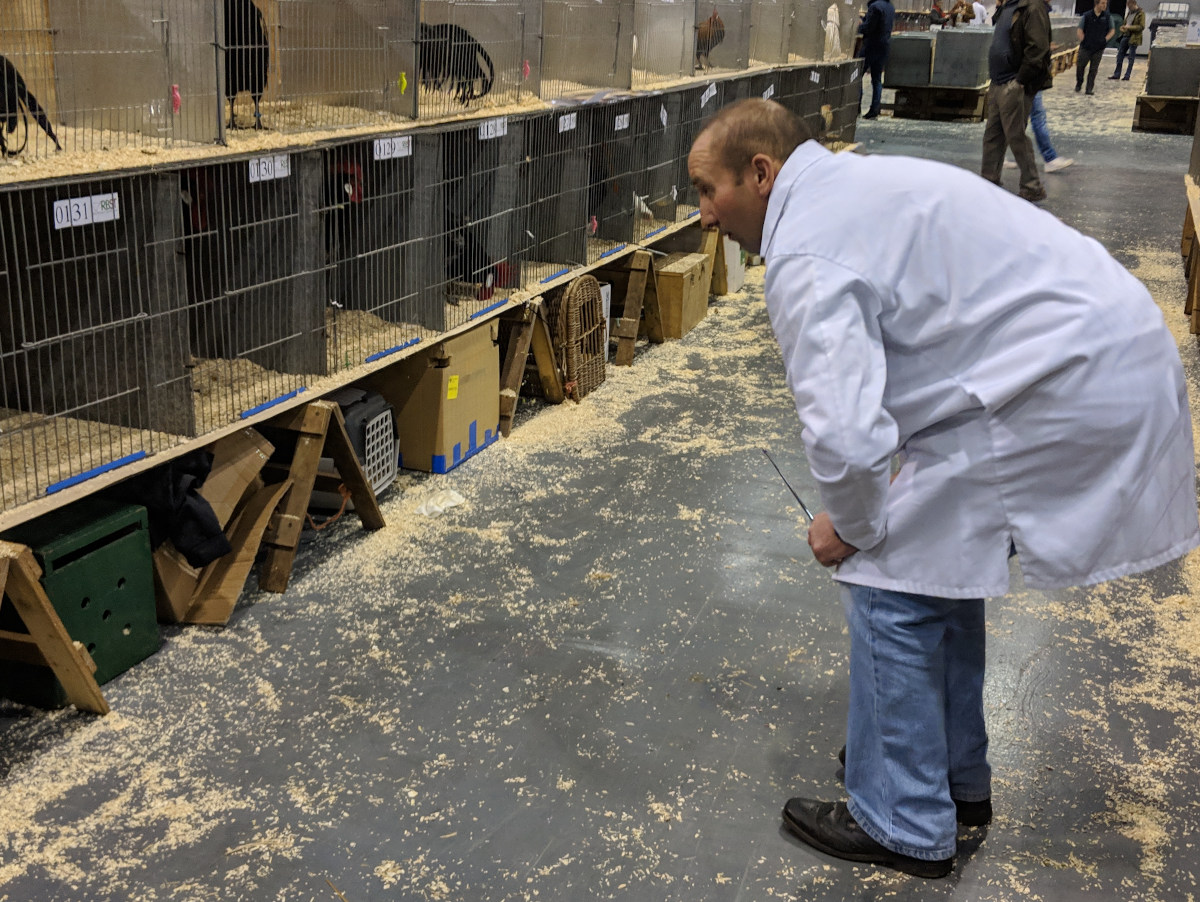
At first you will have some difficulty in getting him to stand as you want, but gradually he will pose for you. When you get him to stand in correct position move back a step or two from the cage with uplifted hand and finger pointing direct at the bird and rub him along the neck or gently under the throat. Repeating the operation will have him well trained in a comparatively short time and you will find you can pose a bird and go back quite a distance and have him stand in position for a full minute and never move.
Voice is important, always use the same tone and assume the same position when training, and above all things keep your temper if you expect to succeed.
Should bird fly down, or up to the rafters in my case, allow it to go but offer treats and feed and a gentle voice to tempt its return. Do not run after him but use this deferential method, and you will soon gain the birds confidence.
There is some work about this, but it is the best system of teaching the birds to pose.
